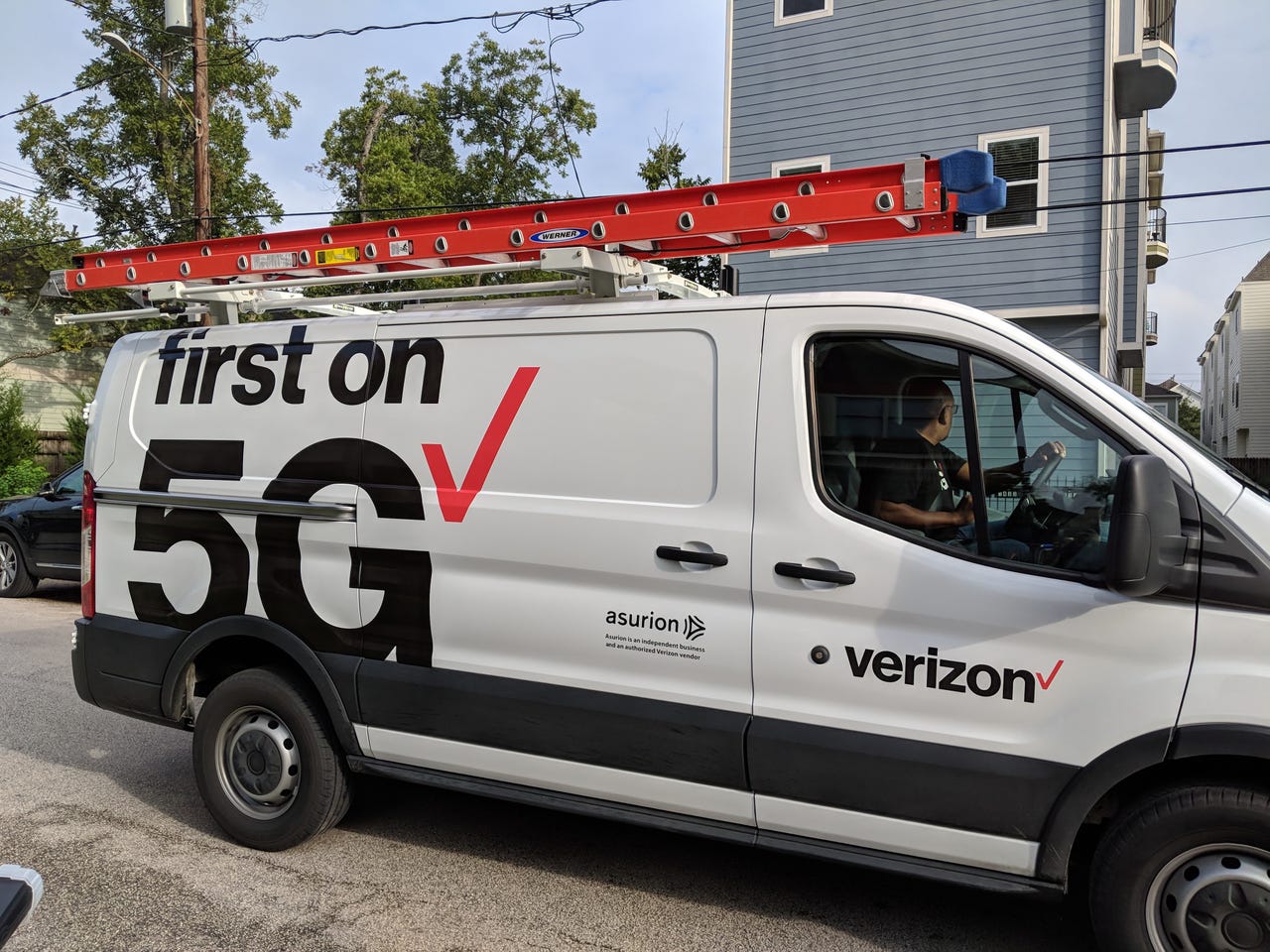































 Verizon
Verizon In 2021, Verizon won an FCC auction granting it access to between 140 and 200 megahertz of the 2-4 gigahertz C-band. Now, Verizon is announcing it's gaining access to some of that bandwidth four months early.
What does this mean?
5G is a wireless communication technology, as were 4G and 3G. When someone talks about wireless communications, they're talking about radio -- signals through the air.
Also: The best Wi-Fi routers right now
Think about it this way. When you pluck a string on a guitar, the string vibrates and sends sound waves through the air. The string vibrates at a certain frequency, which creates a unique sound. Radio works the same way, except instead of noise being created by sound waves, radio signals are sent by invisible waves in the air.
Radio waves are transmitted at various frequencies. Different frequencies have different properties, from how long they reach, to how robust they are in terms of degrading or not degrading through obstructions.
A range of frequencies is called a spectrum, and various sets of frequencies within the spectrum are given names, like C-band. As mentioned, C-band is the name for the frequency spectrum between 4-8 gigahertz.
Also: Comcast introduces 'Storm-Ready WiFi' to help you stay online during power outages
C-band is a fairly ideal frequency for technologies like 5G. Higher frequencies can carry more data, but don't travel as far. Lower frequencies can go quite far, but carry less data.
For example, the military uses Extremely Low Frequency (ELF) transmissions that operate at the 3-30 hertz range to send data through the earth to submarines. The transmission can travel for a very long range, through almost anything, but it takes an enormous amount of power and can send only one character every few seconds. This paragraph would take approximately 32 minutes to send.
C-band is quite fast and can send quite a lot of data. That makes it very valuable. The FCC allocates that spectrum. If a company wants to have access to it, that company needs to buy it at auction. Back in 2021, Verizon spent$52.9 billion (including incentive payments and clearing costs) to get that block of the radio spectrum.
Unfortunately, while Verizon bought access to that spectrum, much of it was already in use by satellite companies. It's like when the government decides to run a highway through town and some of the buildings need to be moved. The satellite companies had to vacate that spectrum, which took some time. In some cases, they were compensated for that relocation, so there's that.
Also: 7 ways to prep your tech for hurricane season
While waiting for that spectrum to be made available, Verizon was given a 60 megahertz slice. Think of it as being able to build out one lane in each direction of the highway. It works, but it's not optimal.
That allowed for Verizon to begin building its offerings, but also allowed for the satellite operators already using the frequency blocks to move their offerings to different frequency bands not purchased by Verizon.
Although Verizon has been operating the 60 megahertz slice, it bought and has been anticipating being able to use 140 to 200 megahertz wide bands of data with different levels of bandwidth (this is where that word comes from) in different areas.
Verizon's big announcement this week is that it's moving into its full allocation four months ahead of schedule. While that might not seem to be much, moving in earlier has considerable cost savings.
It also accelerates Verizon's deployment of 5G, providing areas that already have 5G with greater performance. And, because the company is no longer waiting to take the next step, it can also move up its deployment schedules for 5G in regions not currently served.
Also: 5 things I learned while building my smart home
Speaking of who is being served by Verizon's 5G service, here are some stats:
"Early access to the remainder of the C-band spectrum puts us another four months ahead of schedule from our original projections. This additional spectrum will make 5G Ultra Wideband available to even more Americans, and will open up more availability of our home and business broadband solutions," said Joe Russo, EVP & President of Global Networks and Technology for Verizon. "The more spectrum we deploy on our network, the more capacity we add for our customers to connect."
You can follow my day-to-day project updates on social media. Be sure to subscribe to my weekly update newsletter on Substack, and follow me on Twitter at @DavidGewirtz, on Facebook at Facebook.com/DavidGewirtz, on Instagram at Instagram.com/DavidGewirtz, and on YouTube at YouTube.com/DavidGewirtzTV.
 Tags quentes :
Tecnologia
Smartphones
Tags quentes :
Tecnologia
Smartphones